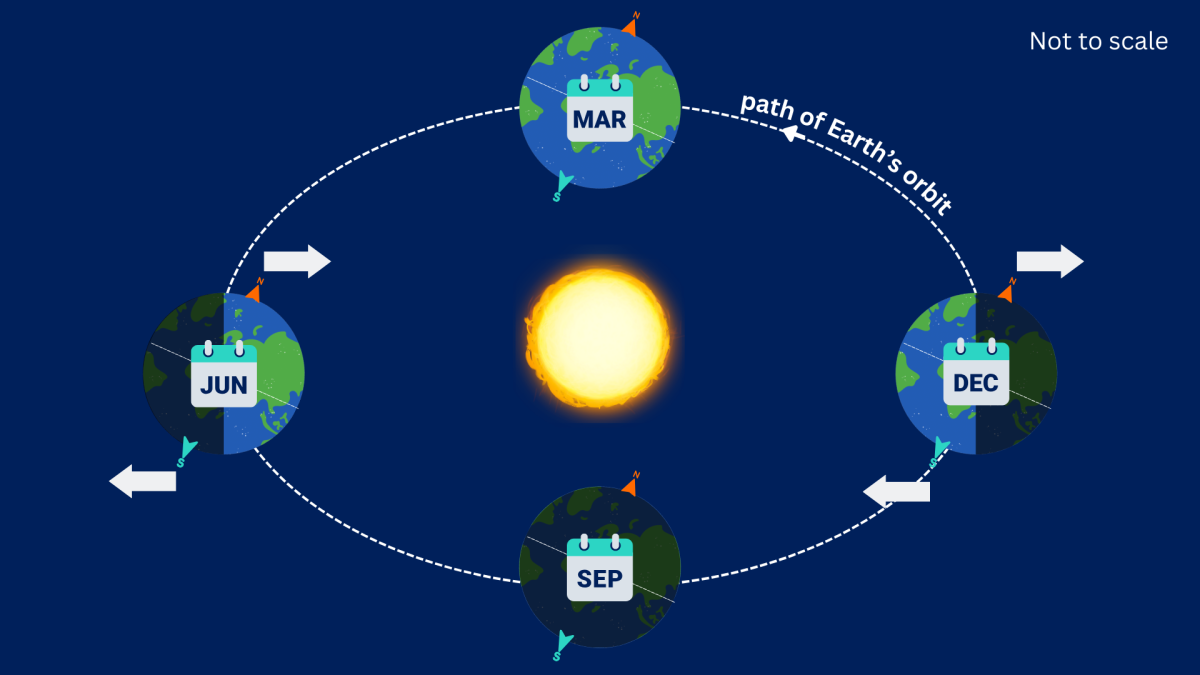There are four seasons: Spring, Summer, Autumn and Winter. Parts of the Earth experience each season once each year.
Places near the Earth's equator don't experience the changes of the seasons. The average temperature and hours of daylight stay about the same throughout the year. Places further from the equator experience all four seasons. The weather and hours of daylight changes during the year. Places near the North and South poles experience extreme changes. It stays light all day long in the summer and dark all day long in the winter.

You might think it gets colder in the winter because the Earth moves further away from the Sun. This is not true! In fact, when it is winter in Europe it is summer in Australia. So whenever it is winter somewhere on Earth, another part of the planet is having its summer.
So what is the reason for Earth's seasons? Well, it's because the Earth is tilted on its axis. The Earth's axis is an imaginary line through the centre of the Earth, from the top to the bottom. Earth spins around this axis once each day. The Earth's axis tilts towards the Sun by around 23°, so the Earth isn't 'stood up straight' as it rotates. Earth has seasons because of this tilt.
When it's summer north of the Earth's equator, the northern part of the Earth is tilted towards the Sun. This part of the Earth gets the most direct light from the Sun. This makes it hotter. At the same time, the southern part of the Earth is tilted away from the Sun. It gets less direct light from the Sun. This produces the cold winter season. The Earth completes one orbit of the Sun each year. As Earth moves around the Sun, different parts of the planet are tilted towards the Sun.
